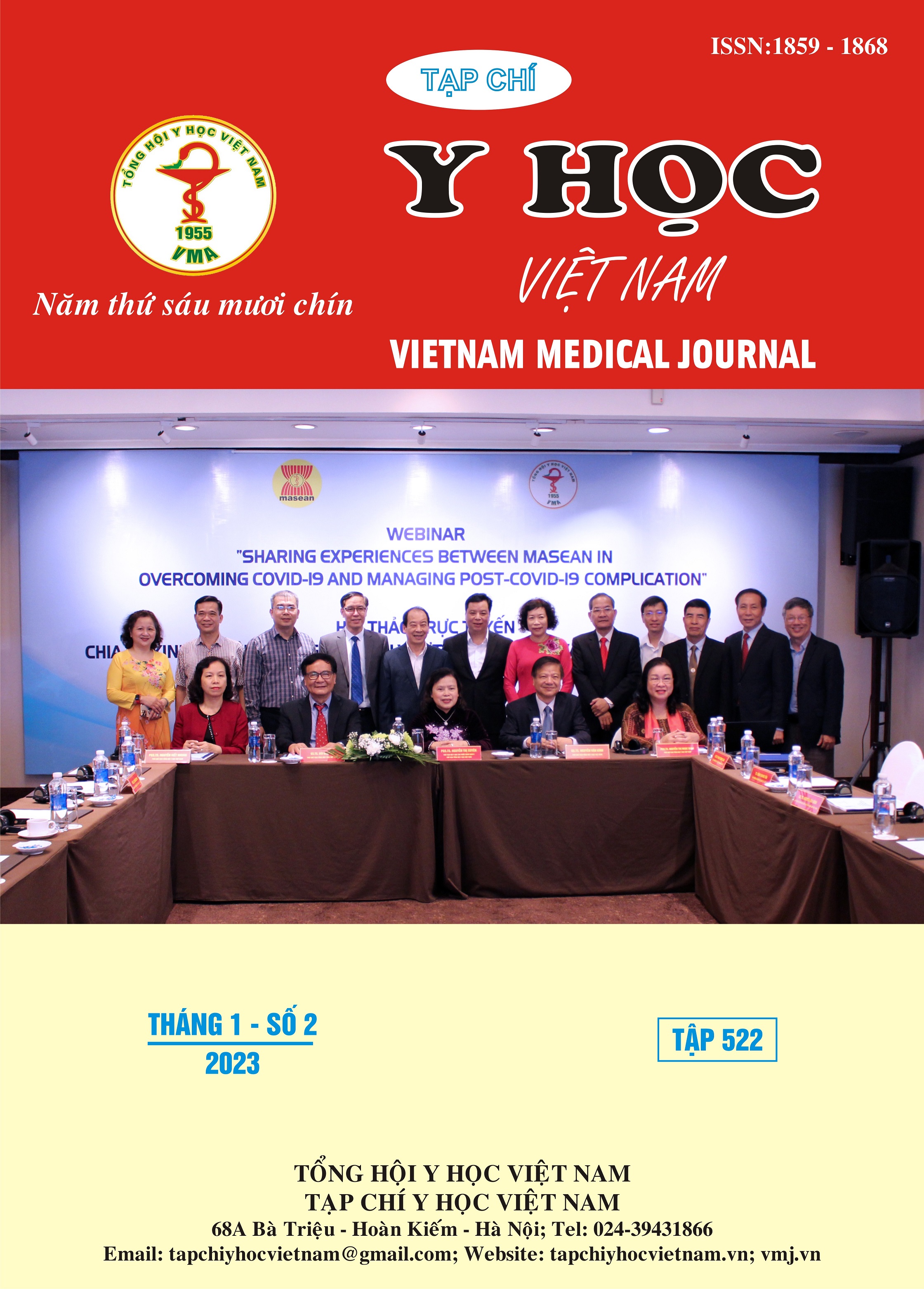NO-REFLOW PHENOMENON AFTER PRIMARY PERCUTANEOUS CORONARY INTERVENTION
Main Article Content
Abstract
Problem: No-reflow phenomenon is one of major complications and it is associated with increasing mortality rate of patients with ST-segment elevation myocardial infarction (STEMI) undergoing primary percutaneous coronary intervention (PPCI). Objective: To detect prevalence and predictive factors of no-reflow phenomeneon in patients with STEMI undergoing PPCI. Result: The prevalence of no-reflow is 17,6%. Predictors of no-reflow phenomenon are: thrombus burden ≥ 4 (OR = 10,37, CI 95% 3,27 – 32,83, p < 0,001), Killip 3-4 at admission (OR = 8,17, CI 95% 1,3 – 51,5, p = 0,025), time from symptom onset to PPCI (OR = 4,37, CI 95% 1,54 - 12,37, p = 0,005), lesion length (OR = 1,12, CI 95% 1,02-1,22, p = 0,016). Conclusion: The prevalence of no-reflow phenomenon after PPCI still be high (17,6%) and this phenomenon can be predicted by some features: thrombus burden, Killip 3-4 at admission, time from symptom onset to PPCI, lesion length.
Article Details
Keywords
No-reflow phenomenon, primary percutaneous coronary intervention.
References
2. Kirma C, Izgi A, et al. Clinical and procedural predictors of no-reflow phenomenon after primary percutaneous coronary interventions: experience at a single center. Circulation journal: official journal of the Japanese Circulation Society. 2008;72(5):716-21.
3. Li H, Fu DG, et al. Evaluation of related factors, prediction and treatment drugs of no-reflow phenomenon in patients with acute ST-segment elevation myocardial infarction after direct PCI. Experimental and therapeutic medicine. 2018;15(4):3940-6.
4. N. Rajesh G, Jayaprasad N, Madhavan S, et al. Predictors and prognosis of no-reflow during primary percutaneous coronary intervention. Proceedings (Baylor University Medical Center). 2019;32(1):30-3.
5. Niccoli G, Burzotta F, et al. Myocardial no-reflow in humans. Journal of the American College of Cardiology. 2009;54(4):281-92.
6. Refaat H, Tantawy A, et al. Novel predictors and adverse long-term outcomes of No-reflow phenomenon in patients with acute ST elevation myocardial infarction undergoing primary percutaneous coronary intervention. Indian heart journal. 2021;73(1):35-43.
7. Tasar O, Karabay AK, et al. Predictors and outcomes of no-reflow phenomenon in patients with acute ST-segment elevation myocardial infarction undergoing primary percutaneous coronary intervention. Coronary artery disease. 2019;30(4):270-6.
8. Wang HJ, Rozanski GJ, et al. Cardiac sympathetic afferent reflex control of cardiac function in normal and chronic heart failure states. The Journal of physiology. 2017; 595(8):2519-34.


